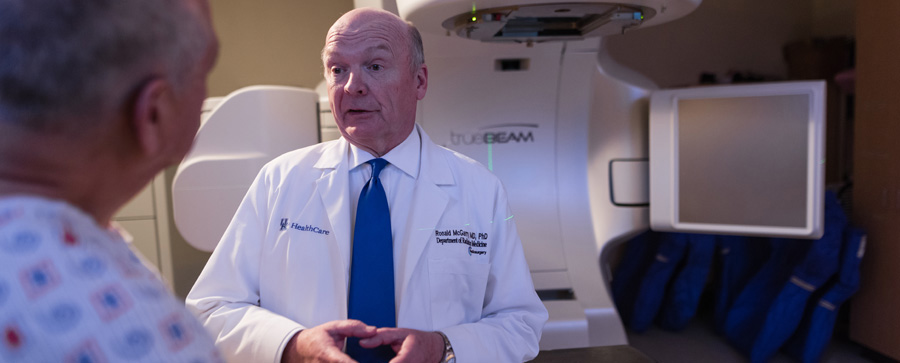External beam radiation

This type of radiation therapy is delivered outside of your body by a machine called a linear accelerator, which emits high-energy x-rays. It is able to focus on the tumor itself and excludes healthy surrounding tissues as much as possible.
What should patients expect?
Before the first treatment, patients undergo a planning CT scan, during which the radiation oncologist and team:
- Take scans of your tumor.
- Determine the exact area of your body that needs radiation and the technique to deliver the treatment.
- Calculate the accurate radiation dose.
- Create any masks or shields you may need to protect the surrounding healthy tissue from the radiation beam and to guarantee accuracy.
Patients then go to the treatment room for a set amount of treatments, which range from every Monday through Friday for nine weeks to as short as one treatment on one day. You must lie very still during each treatment, but sessions typically last only five to 15 minutes each time.
What are the side effects?
Side effects from external beam radiation vary depending on the area of your body treated and other variables, and do not occur at all in many patients. These may include:
- Skin reactions or discomfort at the radiated site.
- Fatigue.
- Hair loss (only in areas being radiated).
- Trouble swallowing, eating or speaking (oral/esophageal radiation).
- Nausea, diarrhea, cramping and/or vomiting (gastrointestinal radiation).
Radiation oncologists at UK are dedicated to helping patients manage their treatment side effects and other symptoms if and when they occur, meeting with patients individually at least once a week during radiation treatment.
At UK, we use several different types of external beam radiation therapy machines based on your type of cancer, where it is in the body, its stage, and other factors.
